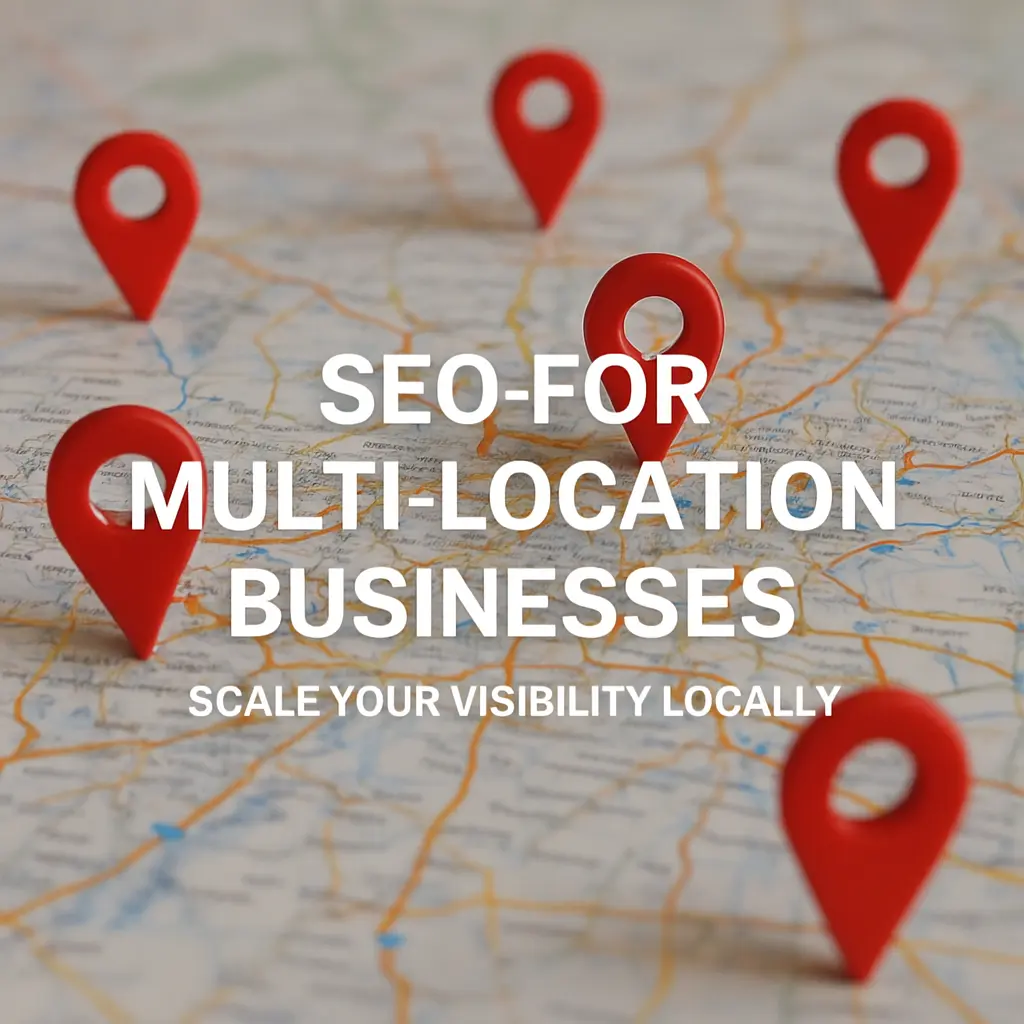SEO for multi-location businesses helps brands rank locally in every city they serve. This blog explains how to optimize Google Business Profiles, local landing pages, citations, and location-specific keywords to boost regional visibility and drive conversions from all service areas.
SEO for Multi-Location Businesses: Scale Your Visibility Locally
Why Multi-Location SEO Matters
If you operate in multiple cities or states, a one-size-fits-all SEO approach won’t work. SEO for multi-location businesses ensures that each of your branches ranks well in local search results.
According to Google, over 46% of searches have local intent, and 76% of local mobile searches result in a same-day visit.
Without a localized SEO strategy, you risk losing visibility to competitors who rank better in specific geographic markets.
Key Challenges in Multi-Location SEO
Multi-location SEO presents unique hurdles:
- Duplicate content risks from identical location pages
- Inconsistent NAP (Name, Address, Phone) data across platforms
- Managing multiple Google Business Profiles (GBP)
- Scalability in review and reputation management
- Difficulty in tracking individual location performance
We’ll break down how to overcome each of these challenges effectively.
Optimizing Google Business Profiles for Each Location
Each branch of your business should have its own Google Business Profile. Here’s how to optimize them:
- Use consistent business names with modifiers (e.g., “RankStar SEO – Los Angeles”)
- Add accurate NAP details
- Select the right categories for each location
- Upload high-quality, local photos
- Publish local updates and offers
- Encourage location-specific reviews
Google favors active and well-optimized listings, especially for map-pack rankings.
Creating Location-Specific Landing Pages
Avoid using the same template for every branch. Each location page should include:
- City-specific headlines and keyword usage
- Local testimonials and case studies
- Embedded map and driving directions
- Internal links to parent and sibling locations
- Unique content that speaks to local audiences
Use canonical tags where necessary to avoid duplicate content issues.
Example:
GrowVilo’s service structure demonstrates this clearly on their Services page.
NAP Consistency and Local Citations
NAP consistency is critical for local SEO. You must maintain identical name, address, and phone number listings across platforms like:
- Yelp
- Bing Places
- Apple Maps
- Facebook
- Local business directories
Use tools like Moz Local, BrightLocal, or Yext for citation management.
Inconsistencies confuse search engines and reduce local trust signals.
Geo-Targeted Keyword Strategy
Focus on location-specific keywords to capture regional intent.
Examples:
- “Digital marketing agency in San Jose”
- “Best pizza delivery in Boston”
- “Local SEO services in Atlanta”
Tips:
- Use keyword + location combinations
- Include neighborhoods or zip codes in your content
- Optimize meta titles and URLs accordingly
Research tools like Ahrefs, SEMrush, or Ubersuggest can help you build a scalable keyword list.
Building Backlinks for Each Location
High-quality backlinks help each branch establish authority. Focus on:
- Sponsoring local events
- Getting featured in city blogs and news sites
- Local chamber of commerce listings
- Hyperlocal guest blogging
- Industry directory submissions
The more geographically relevant the backlink, the better the impact on rankings.
Using Structured Data for Multi-Location Schema
Implement LocalBusiness schema for each branch to enhance visibility in rich results.
Use:
- @type: LocalBusiness
- address
- geo
- telephone
- url
Multiple branches? Nest them under an Organization schema.
Use Google’s Rich Results Test to validate.
Managing Online Reviews per Branch
Each location should independently manage its online reputation. Best practices:
- Encourage reviews from happy local customers
- Respond to all reviews—good or bad
- Use Google’s automated review request link for each GBP
- Share positive feedback on social media and landing pages
Positive reviews improve click-through rates and increase trust.
GrowVilo’s SEO Services for Multi-Location Brands
Managing SEO for multiple business locations requires precision, scalability, and expertise. GrowVilo offers:
- Multi-location SEO audits
- Google Business Profile optimization
- Location page development
- Review and citation management
- Monthly tracking and reporting
Need help scaling your multi-city SEO? Contact the experts via Growvilo
FAQs
1. Can I use one Google Business Profile for multiple locations?
No. Each location must have its own verified GBP to appear accurately in local search results.
2. Do I need a different website for each location?
No, but you should create dedicated, optimized landing pages for each location within the same website.
3. How do I avoid duplicate content issues across location pages?
Use unique content, location-specific case studies, and testimonials. Avoid copy-pasting boilerplate text.
4. What’s the best way to manage reviews for multiple branches?
Use a centralized review management tool or service like GrowVilo. Always respond promptly to maintain engagement.
5. How long does it take to rank a new branch locally?
Typically, 2–6 months depending on the competition, backlink strength, and optimization quality.
Conclusion
Effective SEO for multi-location businesses goes beyond optimizing one website—it’s about building multiple local presences that resonate with regional audiences. From unique landing pages and citation consistency to localized backlinks and structured data, each component plays a crucial role in ranking well city-by-city.
If you’re ready to scale your SEO efforts across locations, trust GrowVilo to manage the complexity and deliver results.



